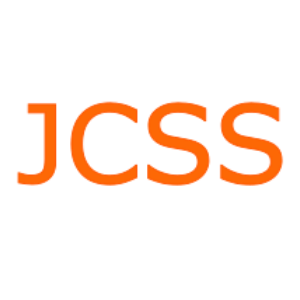3. Principles of limit state design#
3.1. Limit states and adverse states#
The structural performance of a whole structure or part of it should be described with reference to a specified set of limit states which separate desired states of the structure from adverse states.
The limit states are divided into the following two basic categories:
the ultimate limit states, which concern the maximum load carrying capacity as well as the maximum deformability
the serviceability limit states, which concern the normal use.
The exceedance of a limit state may be irreversible or reversible. In the irreversible case the damage or malfunction associated with the limit state being exceeded will remain until the structure has been repaired. In the reversible case the damage or malfunction will remain only as long as the cause of the limit state being exceeded is present. As soon as this cause ceases to act, a transition from the adverse state back to the desired state occurs.
It is further noted here that in some cases a limit between the aforementioned limit state types may be defined. This can be done by an artificial discretization of a the continuous situation between the serviceability and the ultimate limit state. By applying such a procedure a so- called “partial damage limit state” can be defined. For example in case of earthquake damage of plant structures such limit state is associated to the safe shut down of the plant.
Ultimate limit states may correspond to the following adverse states:
loss of equilibrium of the structure or of a part of the structure, considered as a rigid body (eg. overturning)
attainment of the maximum resistance capacity of sections, members or connections by rupture or excessive deformations
rupture of members or connections caused by fatigue or other time-dependent effects instability of the structure or part of it
sudden change of the assumed structural system to a new system, (eg. snap through)
The exceedance of an ultimate limit state is almost always irreversible and the first time that this occurs causes failure.
Serviceability limit states may correspond to the following adverse states:
local damage (including cracking) which may reduce the durability of the structure or affect the efficiency or appearance of structural or non-structural elements.
observable damage caused by fatigue or other time dependent effects
unacceptable deformations which affect the efficient use or appearance of structural or non-structural elements or the functioning of equipment.
excessive vibrations which cause discomfort to people or affect non-structural elements or the functioning of equipment
In the cases of permanent local damage or permanent unacceptable deformations the exceedance of a serviceability limit state is irreversible and the first time that this occurs causes failure.
In other cases the exceedance of a serviceability limit state may be reversible and then failure occurs:
a) the first time the serviceability limit state is exceeded, if no exceedance is considered as acceptable
b) if exceedance is acceptable but the time when the structure is in the undesired state is longer than specified
c) if exceedance is acceptable but the number of times that the serveciability limit state is exceeded is larger than specified
d) if a combination of the above criteria occur.
These cases may involve temporary local damage (eg. temporarily wide cracks), temporary large deformations and vibrations. Limit values for the serviceability limit state should be defined on the basis of utility considerations.
3.2. Limit State Function#
For each specific limit state the relevant basic variables should be identified, i.e. the variables which characterize:
actions and environmental influences
properties of materials and soils
geometrical parameters
Such variables may be time dependent. Models, which describe the behaviour of a structure, should be established for each limit state. These models include mechanical models, which describe the structural behaviour, as well as other physical or chemical models, which describe the effects of environmental influences on the material properties. The parameters of such models should in principle be treated in the same way as basic variables.
Serviceability constaints (limit values according to 4.1) should in principle be regarded as random and may in many cases be treated in the same way as basic variables.
Where calculation models are available, the limit state can be described with aid of a function, g, of the basic variables \(X(t)=X_1(t),X_2(t),\dots\) so that
Eq. (3.1) is called the limit state equation, and
identifies the adverse state.
In a component analysis where there is one dominating failure mode the limit state condition can normally be described by one equation according to (3.1). In a system analysis, where more than one failure mode may be determining, there are several such equations.
3.3. Design situations#
Actions, environmental influences and structural properties may vary with time. Such variations, which occur throughout the lifetime of the structure, should be considered by selected design situations, each one representing a certain time interval with associated hazards, conditions and relevant structural limit states.
The design situations may be classified as:
Persistent situations, which refer to conditions of normal use of the structure and are generally related to the working life of the structure.
Transient situations, which refer to temporary conditions of the structure, in terms of its use or its exposure.
Accidental situations, which refer to exceptional conditions of the structure or its exposure.
